


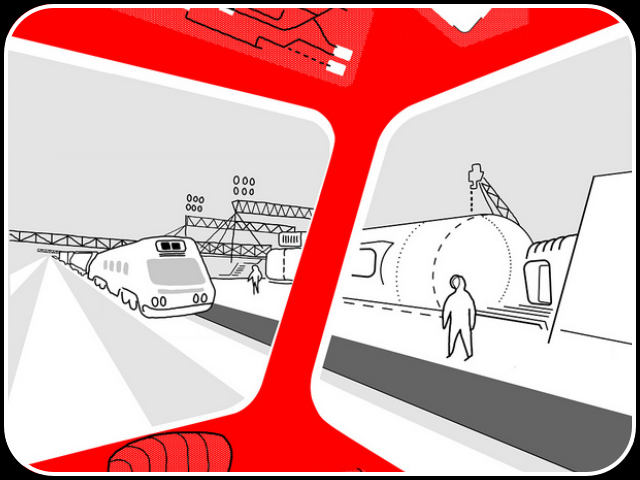







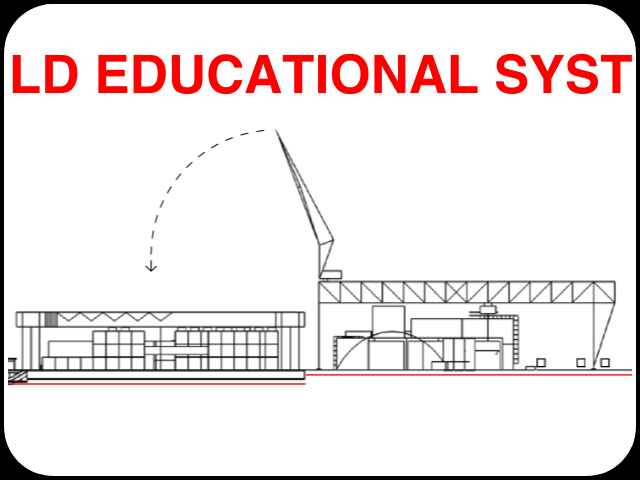

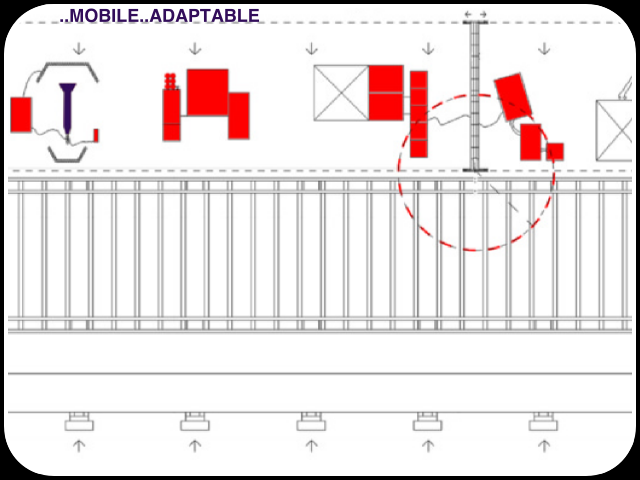









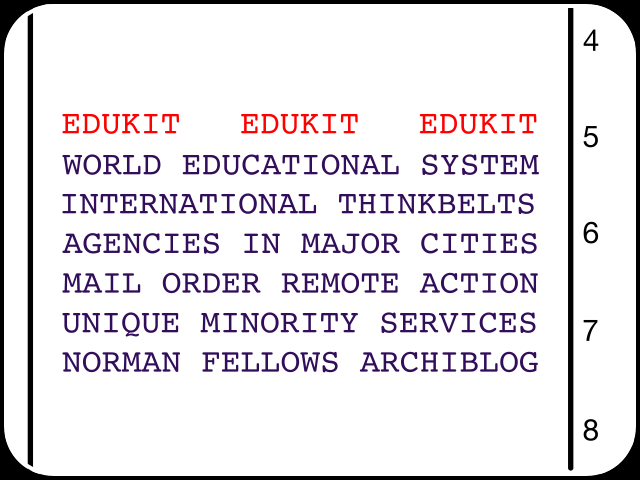
⌾ ‘Fantasia on Edukit’ by Norman Fellows
























⌾ ‘Fantasia on Edukit’ by Norman Fellows
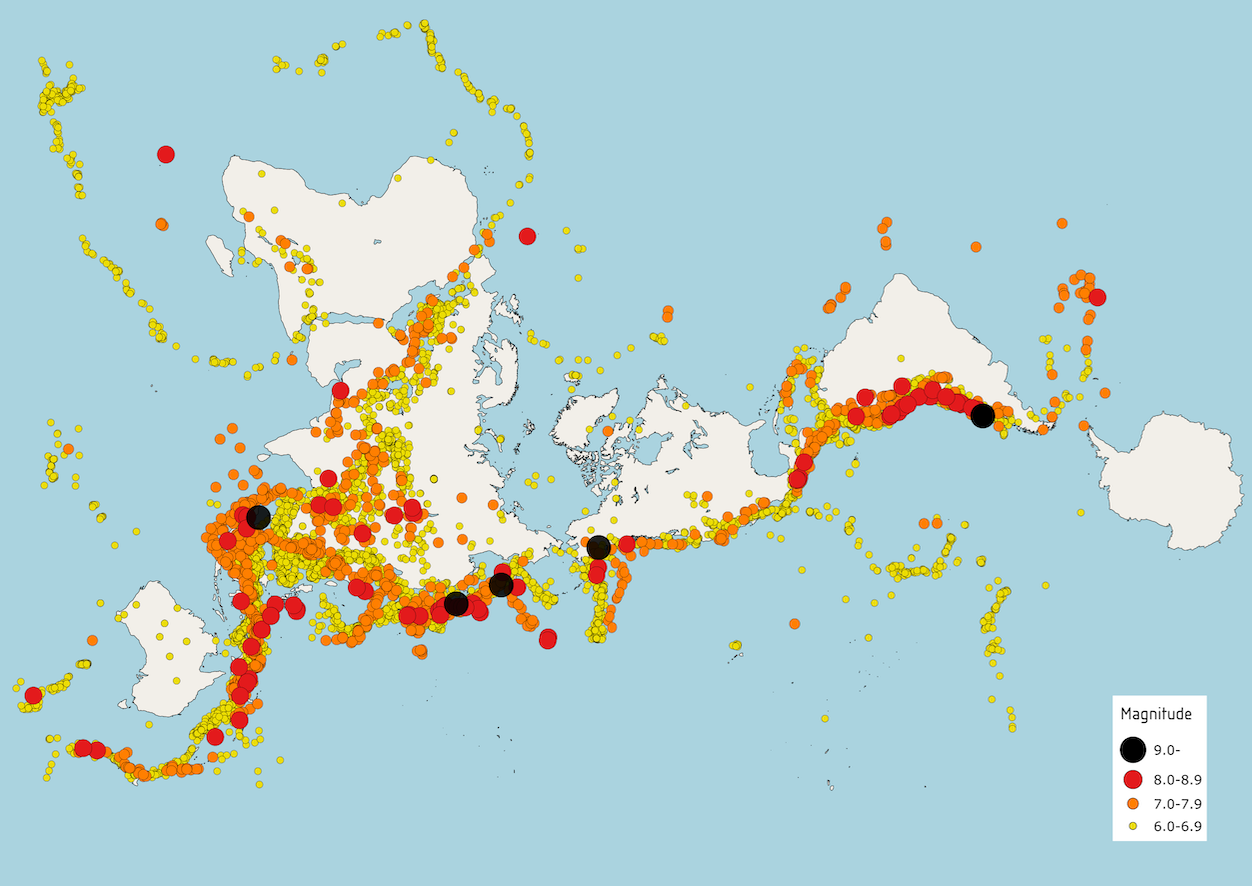
• Map of earthquakes (M6.0+) 1900-2017 [1]
This article is predicated on a comment made by Cedric Price, namely:—
“The whole question of disaster planning is unlikely to even be satisfactorily resolved in physical terms. Only when Agadir and Aberfan are recognised as likely events will the necessary legislation and management enable ‘disaster‘ planning to afford sufficient anticipatory design effort and product.”
Price, 1970, ‘Surface oil containment‘ [2]
| Contents[hide] 1 What do we know? 2 Why do we care? 3 What can we do? 4 References 5 Related articles on Designing Buildings |
1.1 Earthquakes
Table 1 below indicates the numbers of earthquakes and resulting deaths since Agadir:—
| Decade | Number of Earthquakes | Number of Deaths | Source |
| 1961-1970 | 42 | 126,443 | Wikipedia |
| 1971-1980 | 42 | 349,908 | Wikipedia |
| 1981-1990 | 43 | 91,328 | Wikipedia |
| 1991-2000 | 63 | 62,176 | Wikipedia |
| 2001-2010 | 345 | 612,956 | Wikipedia |
| 2011-2020 | 372 | 41,910 | Wikipedia |
| TOTALS | 907 | 1,284,721 |
Thus we know:—
1.2 Landslides
Table 2 below indicates the numbers of landslides and resulting deaths since Aberfan:—
| Decade | Number of Landslides | Number of Deaths | Source |
| 1966-1970 | 7 | 22,674 | Wikipedia |
| 1971-1980 | 11 | 1,287 | ib. |
| 1981-1990 | 5 | 23,188 | ib. |
| 1991-2000 | 7 | 30,096 | ib |
| 2001-2010 | 16 | 3,340 | ib. |
| 2011-2020 | 37 | 9,162 | ib’ |
| TOTALS | 83 | 89,797 |
Thus we know:—
2.1 Research
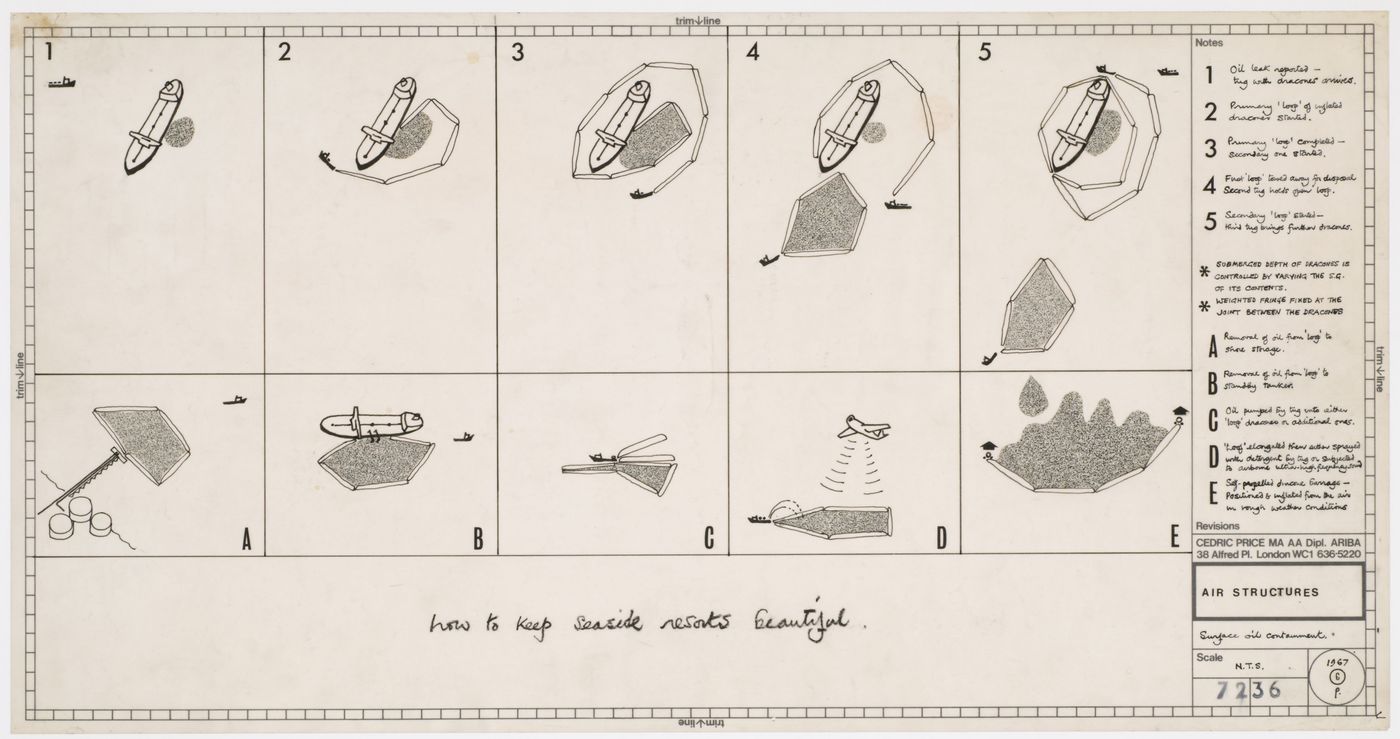
• Air Structures Research: diagram for surface oil containment – Cedric Price © CCA used with permission
Drawing 72 36 above illustrates a project which occurred just before the Torrey Canyon oil spill, This disaster ied to a number of changes in international regulations. For example:—
“…the International Convention on Civil Liability for Oil Pollution Damage (CLC) of 1969, which imposed strict liability on ship owners without the need to prove negligence, and the 1973 International Convention for the Prevention of Pollution from Ships.“ (Wikipedia)
However, according to Wikipedia, there have been 212 confirmed spills since Torrey Canyon.
Furthermore, the lists of disasters below indicate the increasing numbers of disasters:—
Thus we care because the numbers of disasters and deaths indicated in Tables 1 and 2; the number of confirmed spills since Torrey Canyon; and the increasing numbers of disasters; each provide evidence to support the argument, namely:—
2,2 Development
The graph below indicates the trend in the number of disasters since 1900. [3]
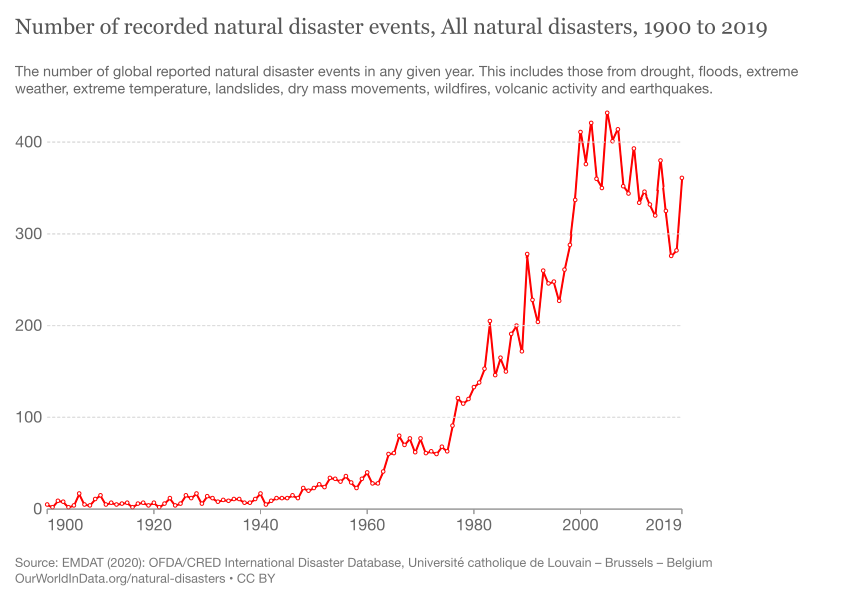
In contrast, the bar chart below indicates the number of deaths from all disasters for each decade since the 1900s. [4]
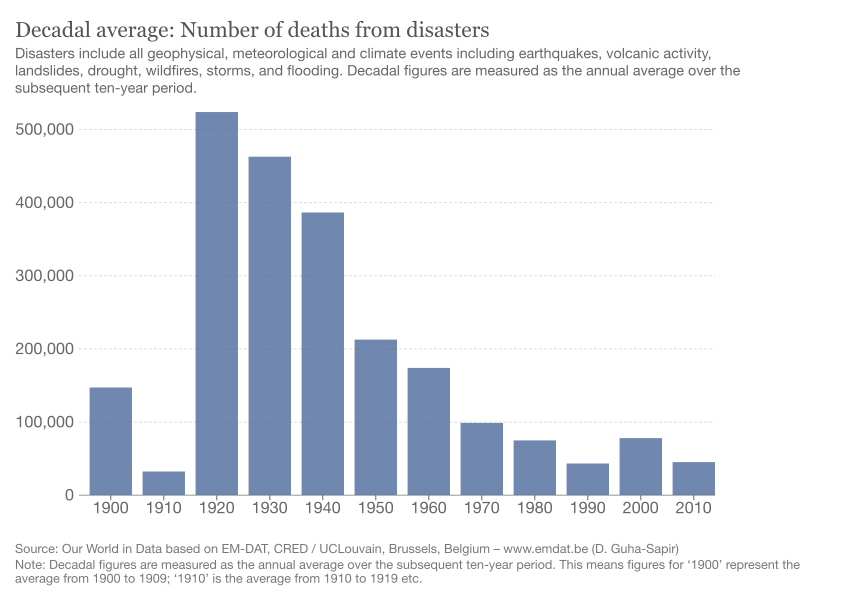
Thus we also care because (a) the trend in the number of disasters is upwards and (b) although the average numbers of deaths from disasters has reduced from more than 500,000 in the 1920s to less than 50,000 in the 2010s, the downward trend has effectively plateaued since the 1990s.
3.1 Interest
This article affirms its premises and proves the validity of the argument.
It therefore reaches a valid conclusion, namely:—
The crucial question now is what can architects do?
In the ‘ACTION and inaction’ section of ‘Works II’ Cedric Price has pointed at:—
“…reasons for architects to involve themselves continuously in anticipatory design as recommended by Buckminster Fuller.”
Price, C., 1984, ‘Works II’, aka ‘The Square Book‘
In fact, we know from a talk that Buckminster Fuller recommended a way for architects to involve themselves:—
“There is an effective strategy open to the architects. Whereas doctors deal with the interior organisms of man, architects deal with the exterior organisms of man. Architects might join with one another to carry on their work in laboratories as do doctors in anticipatory medicine. Architects might solve design problems of world-resource use before people get into resource troubles. Architects might thus join forces, as do scientists, with the integrity of inter-self accrediting of the respective abilities of each individual on the team. Architects might begin the laboratory pooling of their resource capabilities at the university level.”
Fuller, B., 1959, ‘The Comprehensive Man’, quoted in Fellows, N., 2022, ‘Anticipatory Design‘
Thus this article advocates:—
3.2 Engagement
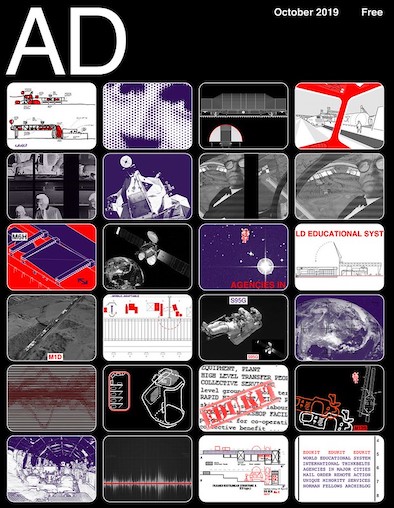
This article was written by Norman Fellows.
Fellows, N. (2022), ‘Anticipatory Design‘, Designing Buildings
Our World in Data (2020) ‘Number of recorded natural, disaster events, All natural disasters, 1900 to 2019‘ [3]
Our World in Data (2020) ‘Decadal average: Number of deaths from disasters‘ [4]
Phoenix7777 (2018) ‘Map of earthquakes 1900-2017‘ [1]
Price, C. (1970) Cedric Price Supplement No. 1, AD/10/70 [2]
Price, C. (1966-1971) ‘Air Structures Research‘, Canadian Centre for Architecture
Wikipedia (2022) ‘Lists of disasters’
Wikipedia (2022) ‘Lists of 20th-century earthquakes‘
Wikipedia (2022) ‘List of earthquakes 2001–2010‘
Wikipedia (2022) ‘List of earthquakes 2011-2020‘
Wikipedia (2022) ‘List of landslides‘
Wikipedia (2022) ‘List of oil spills‘
—Archiblog 08:53, 11 Sep 2022 (BST)
⦿ A continuously updated thesis
⦿ A continuous approach to architecture
⦿ Archi[tecture... ...we]blog
⦿ Archi[tecture... ...we]mash
⦿ World-Wide Dwelling Service
⦿ World Educational System
⦿ From Education Automation to Edukit by Norman Fellows
A research project by Norman Fellows
An update by Norman Fellows
⦿ An archival holding
⦿ A housing research and development programme
⦿ From Original Conception to Possible Development
You must be logged in to post a comment.